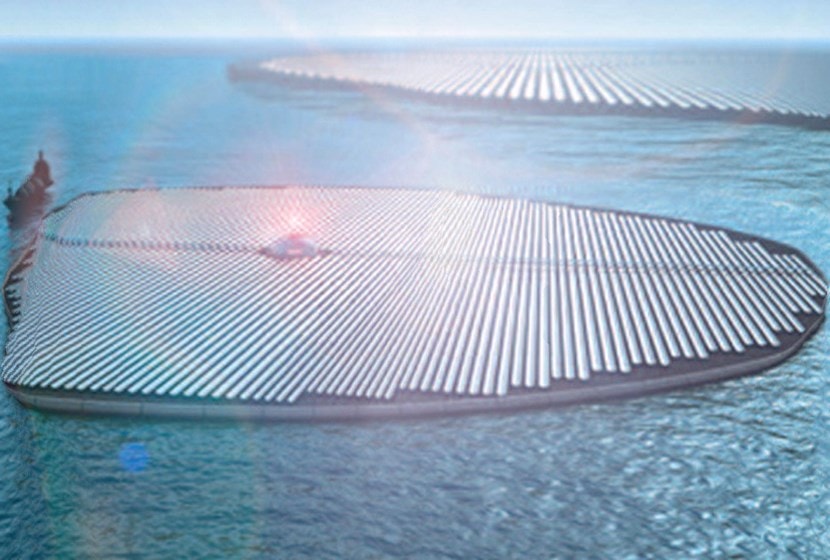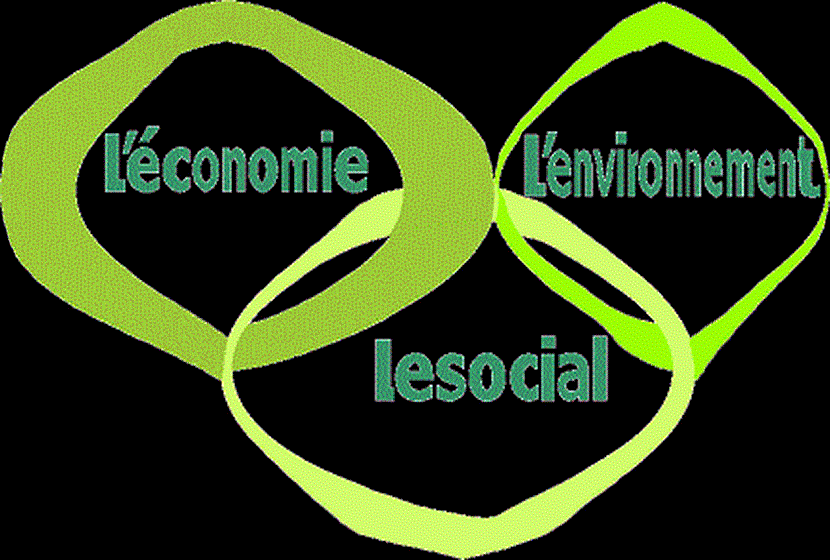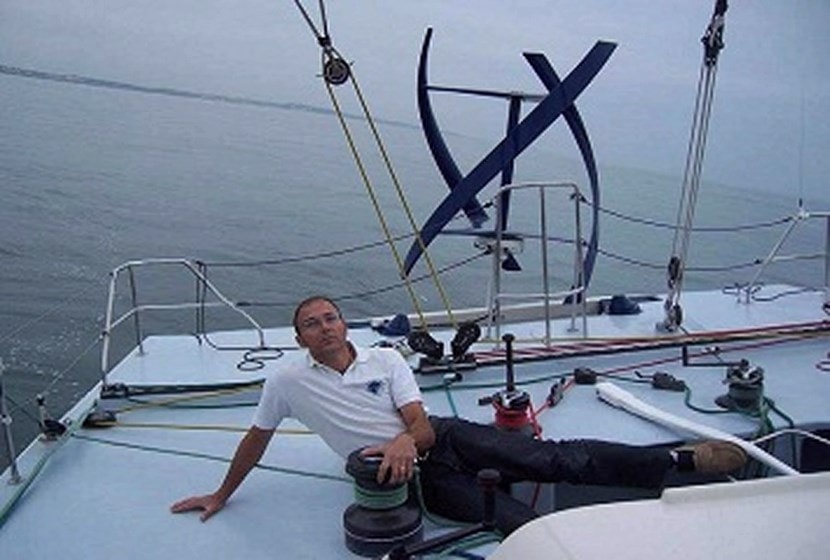Since solar energy is the source of all renewable energy on Earth with the exception of nuclear power, geothermal energy and tidal power, it is without question the most abundant energy. Photovoltaic panels are its preferred capture tool. The problems hindering its development in our societies come from its low efficiency (depending on weather conditions) and also from the large surface area required to install these bulky and unsightly solar panels (a matter of taste). Here are in this article various projects that can respond to this problem: solar panels on water.
What is the least crowded space on the planet? The ocean covers 70% of the earth's surface and contains absolutely no relief that could cast a shadow. Floating solar panels have the advantage of being able to withstand extreme conditions since they can be submerged, thus solving the water-intensive problem of overheating.
The ecological interest of this technological innovation is twofold, since in addition to producing energy from renewable sources, the floating panels will not require the destruction of forests or agricultural land, a major problem in the installation of conventional solar power plants that occupy large areas on the ground.
Numerous projects in the world
 - An Italian engineering company has devised a way to increase the production of solar panels using concentrators without monopolizing precious land: placing them on rafts.
- An Italian engineering company has devised a way to increase the production of solar panels using concentrators without monopolizing precious land: placing them on rafts.
End of February, Scienza Industria Tecnologia (SIT) detailed the solar power generation system called Floating Tracking Cooling Concentrator, which is being tested in Italy and South Korea. The company hopes that these solar concentrators will be used on small lakes or on artificial reservoirs on farms and in quarries.
There are already solar panels installed on ponds, for example in a winery in California. However, SIT is trying to use water as an advantage to cool the panels coupled with concentrators.
Reflecting light using mirrors on standard silicon solar panels can significantly increase the efficiency of the panels. However, the high heat caused by the concentration of light reduces the efficiency of silicon solar cells. In its project, SIT is circulating water over the panels, which will increase the efficiency by about 10% per year.
Marco Rosa-Clot, a professor at the University of Florence who led the design of the floating solar concentrator, explains that if 10% of Sicily's artificial lakes and reservoirs were covered with solar panels, it would generate 1 gigawatt of electricity at peak times. The cost of the system, meanwhile, would be 20% less than that of ground-based solar panels, he told AFP.
(Source : http://www.smartplanet.fr/2012)
– Solaris Energy,an Israeli start-up specializing in the manufacture of solar panels, is collaborating with EDF on a new project to implement photovoltaic panels in Cadarache, in the south-east of France, called "Aquasun". These floating panels are composed of a multitude of small articulated modules.
Agricultural or industrial bodies of water will be affected by this project, tourist areas will not be used, nor will open sea installation be possible. In order not to harm local ecosystems, these floating platforms are designed to allow oxygen to pass through at all times. A first prototype is currently being tested at Cadarache to determine whether it is viable or not. If all goes well, it should then be on the market after the summer of 2012.
The installation of these panels in Israel on the country's 400 or so water recycling tanks could provide 10 to 20% of renewable energy by 2020. (Source : http://www.miwim.fr/blog/ 2012).
- Singapore wants to be identified as a hub in South East Asia for the photovoltaic energy sector. A number of installations are expected in the coming years, including a particularly innovative one involving the installation of floating solar panels (mirror-based solar concentration photovoltaic systems) in Singapore's water reservoirs. Singapore will build its first floating solar panel system - the first of its kind in the Asia-Pacific region - at the Tengah Reservoir in the western part of Singapore.
Currently in Singapore, solar panels are built on the roofs of buildings and as they require a large amount of occupied space to generate a significant amount of energy, new solutions need to be found. The aim of this pilot project is therefore to study the potential use of the surfaces of the water tanks, which are numerous in Singapore (15 rainwater tanks) and thus to solve the problem of free space, which is necessarily reduced, in the island state of Singapore.
Other factors are being investigated, such as the effect of cooling the solar panels by the surrounding water on the efficiency of the photovoltaic system, the reduced evaporation of water from the reservoirs due to the presence of the panels, and the growth of algae. So-called "recreational" reservoirs such as the Mac Ritchie will not be targeted: only remote reservoirs in Singapore will be studied.
Conducted by government agencies such as the Economic Development Board (EDB) and the National Water Agency (PUB), it is therefore a semi-public but also semi-private project with the participation of the German company Phoenix Solar. This innovative project has a budget of 11 million Singapore dollars, i.e. about 6.3 million euros. The system should be operational by 2013.
(Source : BE Singapore number 77 (5/12/2011) - French Embassy in Singapore / ADIT - http://www.bulletins-electroniques.com/actualites/68422.htm)
 - A sealed partnership between the Indian giant Tata Power and the Australian company Sungency has given rise to a brand new type of floating photovoltaic panels. India, which aims for nothing less than world leadership in solar energy, is clearly setting out to achieve this goal.
- A sealed partnership between the Indian giant Tata Power and the Australian company Sungency has given rise to a brand new type of floating photovoltaic panels. India, which aims for nothing less than world leadership in solar energy, is clearly setting out to achieve this goal.
According to its initiators, this concentrating solar concept called LSA (Liquid Solar Array) would be the most efficient photovoltaic solution to date. Installing the panels near a dam, for example, would make it possible to double the production of clean energy on the same surface and over the same period of time. These panels are suitable for life on the water: in the event of storms or overheating, they will submerge.
Construction of the world's first floating photovoltaic farm began in 2011. Testing continues with a view to commissioning next year.
 - In France, the company PORALU MARINE has installed floating solar pontoons at Canoe Brook in the state of New Jersey, 25 km from New York. The electricity produced will enable this water treatment plant to supply 78,000 homes with electricity and water, the energy also being used to run the treatment plant, which supplies 152 million litres of water every day. (Source : http://www.paperblog.fr)
- In France, the company PORALU MARINE has installed floating solar pontoons at Canoe Brook in the state of New Jersey, 25 km from New York. The electricity produced will enable this water treatment plant to supply 78,000 homes with electricity and water, the energy also being used to run the treatment plant, which supplies 152 million litres of water every day. (Source : http://www.paperblog.fr)
There is also thehe Solar Island project, large floating solar panels, which won the Evenir prize in 2008. This is supported by the Swiss Centre for Electronics and Microtechnology in Neuchâtel. For more information, please click here: http://www.solar-islands.com/
 All these projects, if they are successful, will certainly lead to other installations with the aim of creating new and exciting prospects for a sector that has already been the subject of numerous innovations in recent years. The American company " Liquid robotics "had designed a remotely-operated boatIt is a real solitary robot navigator, floating on the surface, its solar panel always well exposed, facing the sky.
All these projects, if they are successful, will certainly lead to other installations with the aim of creating new and exciting prospects for a sector that has already been the subject of numerous innovations in recent years. The American company " Liquid robotics "had designed a remotely-operated boatIt is a real solitary robot navigator, floating on the surface, its solar panel always well exposed, facing the sky.
{Jacuzzi on}










